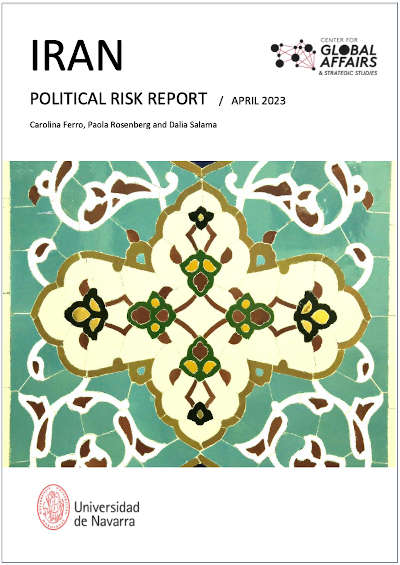In the image
Islamic mosaic, Dar-al-Hadith Cultural Academic Institute of Qom, Iran
EXCUTIVE SUMMARY
The purpose of this political risk report is to analyze whether Iran is a suitable destination for investors. By examining the internal and external factors that influence the economic, political, social, and energy infrastructure aspects of the country, the effects on the stability of Iran can be determined.
In regard to the economic outlook, Iran will experience a GDP growth rate of 2.05% in 2023 and 2024, generating a stable economic expansion thanks to government spending, increased foreign direct investment, diversification of economic sectors and the ties with new Asian partners. Foreign direct investment is essential to the development and expansion of the country's industries, making it a key aspect in Iran's foreign policies and external action. Even though foreign investors were dissuaded after the 2018 sanctions imposed by the US, in 2022 the total number of foreign investments increased. The Republic will experience a decrease in inflation from 40% in 2023 to 30% in 2024 demonstrating Iran's efforts to reinforce its monetary policies in order to pacify exchange rate markets. This shows Iran's resilience towards external pressures and attempts to weaken its economy.
In relation to the political and social outlook, it is essential to outline the intricateness of the mixture of religion and politics within the regime. As a result of Iran's main policy objective of being an anti-West regime, it looks for opportunities and partners within its region and with geopolitical significance that can expand its regional dominance. The potential Supreme Leader successor, President Raisi, has inflamed the social protests with his radical internal policies discriminating against women and minorities. However, these protests are expected to subside in the following two years. Despite the rise of activism by ethnic minority groups it is not likely for national cohesion to be affected in the medium term.
Lastly in the energy prospects, Iran has continued to be a key player in the oil and gas export industry. The Iranian government forecasts that the oil production will arrive to 4 million barrels per day at the end of the year; it is a difficult goal, but production will increase consistently. In the natural gas industry, it is predicted that there will be an increase in the exploitation of Iran's natural gas reserves with the development of many projects in the region. This is possible due to Iran's ability to weather the sanctions and the sizable investments of key partners like China and Russia.


